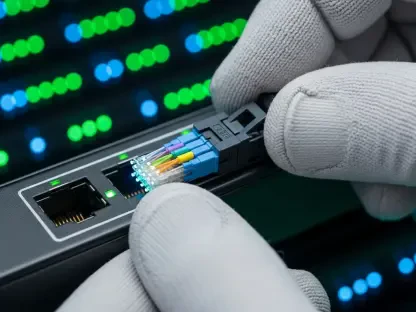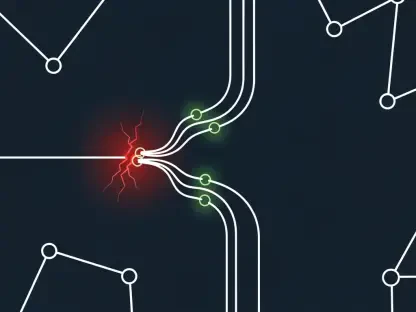In a world where artificial intelligence is reshaping industries at an unprecedented pace, Nokia has stepped into the spotlight with a vision to dominate the telecommunications sector through what it calls the “AI supercycle.” This transformative concept promises to drive growth and innovation, and Nokia’s recent Capital Markets Day event served as the stage for unveiling ambitious financial targets and a sweeping strategic overhaul. Held in Espoo, Finland, the event drew global attention from industry leaders, investors, and analysts eager to understand how a European tech giant plans to position itself at the forefront of this technological revolution. The announcements signal a pivotal moment not just for Nokia, but for the broader European telecom landscape, as the company aims to harness AI to redefine connectivity and infrastructure.
Nokia’s Ambitious Financial and Structural Shift
The centerpiece of the Capital Markets Day was Nokia’s bold financial projection to achieve a comparable operating profit of €2.7 billion to €3.2 billion (approximately $3.1 billion to $3.7 billion) by 2028, a significant leap from the €2 billion ($2.3 billion) recorded last year. This target underscores the company’s confidence in capitalizing on AI-driven demand across telecom networks. Leadership emphasized that the growth trajectory hinges on leveraging emerging technologies to meet the needs of a data-hungry global market, positioning Nokia as a key player in the next wave of digital transformation.
Beyond financial goals, Nokia announced a major reorganization with the creation of the Mobile Infrastructure unit, a strategic integration of core networks, radio networks, and the former Nokia Technologies division. Temporarily led by CEO Justin Hotard, this restructuring aims to streamline operations and focus innovation on AI-powered solutions. The event also highlighted key personnel changes, with Raghav Sahgal stepping into the role of chief customer officer to enhance client engagement, while Tommi Uitto, former president of mobile networks, departed from senior management, marking a shift in the company’s leadership dynamics.
The significance of these moves lies in their alignment with the broader industry trend toward AI integration. Nokia’s leadership repeatedly framed the “AI supercycle” as a once-in-a-generation opportunity, suggesting that the company’s future success depends on its ability to deliver cutting-edge infrastructure for an increasingly connected world. This strategic pivot resonated with attendees, sparking discussions about how such transformations could redefine competitive edges in the telecom sector.
Industry Context: AI Sovereignty and Infrastructure Growth
While Nokia took center stage, the event also shed light on parallel developments in the European tech ecosystem, reflecting a collective push toward innovation and independence. Deutsche Telekom’s involvement in the SOOFI project, a research initiative led by Leibniz University Hannover to develop a sovereign European large language model with 100 billion parameters, was a key talking point. Supported by T-Systems’ Industrial AI Cloud for training, this effort highlights Europe’s determination to reduce reliance on US and Chinese tech dominance, aligning with Nokia’s own forward-looking vision.
Infrastructure advancements were another focal point, with discussions around projects like Altibox’s Verena subsea cable, a 630km link between the UK and Denmark slated for operation by the fourth quarter of 2028. Designed to address surging data traffic in the Nordic region, this initiative complements Nokia’s goals by ensuring the robust connectivity needed to support AI and digital expansion. Attendees noted how such projects are critical enablers for the kind of technological leap Nokia envisions, underlining the symbiotic relationship between hardware and innovation.
Regulatory and financial landscapes also framed the event’s broader narrative. Updates on Iliad’s 2.1% revenue growth to €2.6 billion ($3 billion) in the third quarter, driven by strong performance in Italy, provided a snapshot of operational resilience among European operators. Meanwhile, regulatory challenges, such as the European Commission’s classification of Amazon as a “very large online platform” under the Digital Services Act and ongoing fraud investigations at Altice, reminded participants of the complex environment in which tech giants operate. These topics added depth to the conversation about balancing innovation with accountability.
Implications for the Future of Telecom
Nokia’s Capital Markets Day concluded with a clear message: the AI supercycle represents not just a trend, but a fundamental shift that will shape the telecom industry for years to come. The company’s financial ambitions and structural changes, paired with industry-wide efforts like Deutsche Telekom’s push for AI sovereignty and infrastructure projects like Verena, painted a picture of a sector in rapid evolution. Discussions among attendees often circled back to how these developments could enhance Europe’s global competitiveness, particularly in a field often dominated by non-European players.
The event also sparked reflections on the challenges ahead, from navigating regulatory hurdles to ensuring that technological advancements translate into tangible market gains. Nokia’s repositioning as a leader in AI-driven solutions was seen as a bold step, but one that must be matched with execution to deliver on its promises. The interplay of innovation, connectivity, and governance emerged as a defining theme, with implications for how companies across the region adapt to a fast-changing landscape.
Looking back, Nokia’s Capital Markets Day stood as a defining moment for the European telecom sector, setting a tone of ambition and urgency. Moving forward, stakeholders should focus on fostering collaborations that bridge corporate goals with regional priorities, such as technological autonomy. Governments and industry leaders might consider incentivizing investments in AI and infrastructure to sustain this momentum, while addressing regulatory frameworks to ensure fair competition. As the industry evolves, tracking Nokia’s progress toward its 2028 targets will offer critical insights into whether the promise of the AI supercycle can truly transform the future of connectivity.









